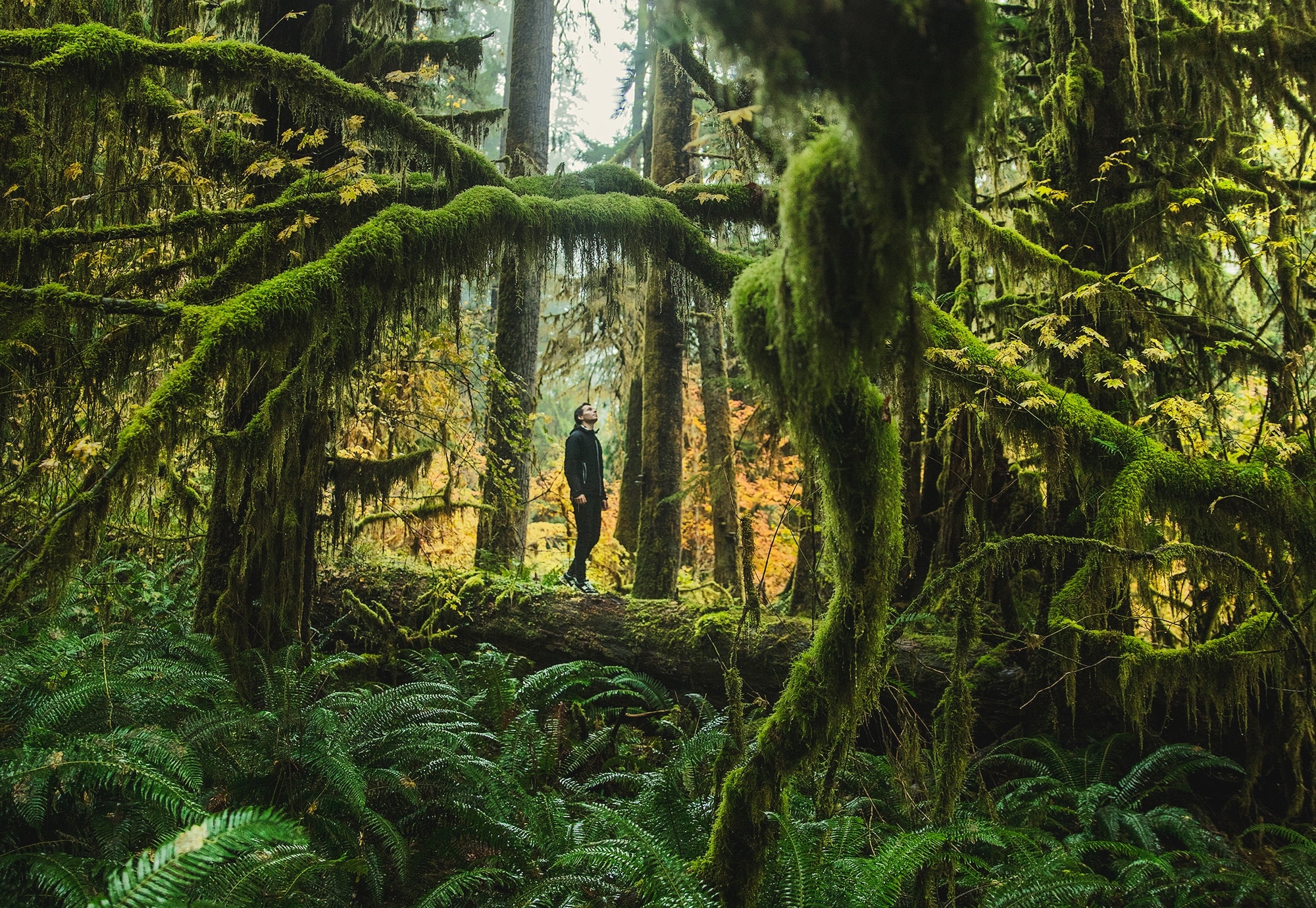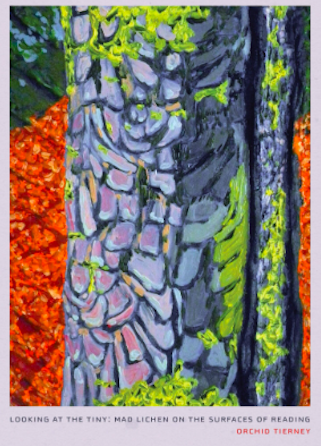In an era of environmental catastrophe, it’s easy to forget that we are the environment too. The world affected by climate change is not some distant place far away in the forest. It’s us. We are as much a part of the world as the trees, the birds, the ocean.
If we have any hope of recovering, we have to remember this essential connection. Instead of conceiving of “human” and “nature” as opposites, as the Western literary tradition would have it, we need to recall the link between ourselves and everything that is not us.
The books in this reading list reflect our essential connectedness, bringing together the human and the natural in ways that remind us they have always been the same thing. Whether it’s through lyric inventions, the voices of animals, or haikus for the plants in sidewalk cracks, these books embody the truth that humans have always been natural, and that saving ourselves is the same as saving the world.
It’s no coincidence, either, that the books in this list mix genres and often end up with a hybrid approach to writing. In my book You’re the Woods Too, nonfiction has to wear the clothes of fiction, poetry, and even drama in order to cross the gaps we have built in our relationship to nature. I couldn’t find a single language where, as the title puts it, “I was the woods too.” I had to built that language out of parts, so that flash fiction waltzes across the unsaid, moss poems traverse the boundary layer, and a theater filled wall-to-wall with plants is a home for the very real drama that unfolds. The books on this list engage in that same writerly struggle, finding in their innovative forms and structures ways to return the human to the natural.
Finally, you’ll notice that most of these books are published by small presses. Small presses have long been a vibrant home for writing that transforms and innovates, making a place where the binaries and gaps in literary history can be filled in and create a more complete picture. We are all working toward that better picture together: an existence where we’re not separate from the world that surrounds us but an essential part of it.
Urban Tumbleweed: Notes from a Tanka Diary by Harryette Mullan
As Harryette Mullan asks in the introduction to her fleeting, visceral collection of tanka, “What is natural about being human?” She answers this question by paying a poet’s careful attention to the urban landscapes of Los Angeles, Venice, and Santa Monica, honoring each moment, no matter how man-made, as natural. Whether it’s two seagulls fighting over a hamburger bun, collard greens and aloe vera grown at home, or the discarded plastic bag (“urban tumbleweed”) that gives the collection its name, Mullan treats everyday objects with a sensitivity and gentleness that brings them into the realm of the natural world.
Nature Poem by Tommy Pico
The second book in Tommy Pico’s Teebs tetralogy, Nature Poem dives headfirst into problematic understandings of the natural world, especially its romanticized association with Native Americans. “I can’t write a nature poem / bc it’s fodder for the noble savage / narrative. I wd slap a tree across the face, / I say to my audience,” Pico writes on the second page of the book. As he rejects the nature poem, though, he also reinvents it, naming a nature that is not separate from humans and a countryside that is not separate from the city. Pico’s is a queer pastoral that does not rely on binaries and instead arrives at a place of interconnection, taking apart colonial, white ideas that seek to draw boundaries between the natural and the human.
Edges & Fray: On Language, Presence, and (Invisible) Animal Architectures by Danielle Vogel
Danielle Vogel’s Edges & Fray is simultaneously a poetry collection, an art gallery featuring nests of her own making, and a creative manifesto. Comparing the act of creation to the work a bird does building a nest, Vogel makes space for non-linear creative processes, her sentences healing by turning backward and weaving through themselves, ever-surprising and ever-revealing. As she writes in her afterword, this book wants “To touch a sound. To hold the cellular structure of a sentence.” In weaving nests of sentences (and sentences of nests), Vogel returns the natural world to the act of communication.
A roundtable, unanimous dreamers chime in by Brenda Iijima and Janice Lee
This collaborative novel begins with a first-person narrator on a bike covered with seeds. The narrator feels themself melding with the seeds, trading subjectivity with the seeds, and soon even a squirrel enters the mix and the narrator’s perceptions. The novel turns to a meshing of consciousness and ultimately a meshing of being, in which the coexistence of humans, plants, and animals is no longer coexistence at all but a single, intertwined wholeness. “What is home if there are no walls?” the co-authors ask. The whole world is a home, they seem to say, and as humans we do not need to close ourselves off from it.
Imagine a Death by Janice Lee
Janice Lee’s novel envisions a natural world that cannot be separated from the human-induced apocalypse that is overcoming it. While the main characters are human, the book also speaks in the voices of whales, birds, moss, a dog, a cat, a tree, and other beings, puncturing holes in our illusion that our lives can be separated from those of other beings. As the three main characters journey through grief, they also achieve a kind of arrival, living catastrophe instead of fleeing it and recognizing that our experience of disaster is as natural as the world being destroyed.
Gathering Moss by Robin Wall Kimmerer
Although she is best known for her second book, Brading Sweetgrass, Robin Wall Kimmerer’s Gathering Moss is a profound journey into the lives of the subtle beings living at the boundary layer between land and sky. With her signature gentleness and close observation of the natural world, she places personal story alongside erudite descriptions of the biology and cultural history of moss in order to create a generous and engaging read. Moss and its human observers and moss have much to teach each other, and living at the level of moss can remind us of the earth we are always on and a part of.
looking at the Tiny: Mad lichen on the surfaces of reading by Orchid Tierney
Orchid Tierney’s looking at the Tiny is both small in its focus and is major in its resonances. Describing lichen as a “tiny” place, Tierney traces the poetry of Lew Welch and others in order to arrive at a sense of what it means to inhabit the world beyond the limitations of the self. Instead of prizing only depth, Tierney proposes a “surface” reading, experiencing the world laterally through connection and presence. As Tierney writes, “the lichens arrest the world from a deliberate final closure. instead, they are full of promise and rejuvenation.” In turn, we can take joy in smallness by remembering how widely we are surrounded by the world.
Gut Botany by Petra Kuppers
Petra Kuppers invokes an embodied landscape in this series of interconnected poems, cataloging dance performances as well as personal encounters with the natural world through the lens of queerness and disability. No detail is too large or small for Kuppers’ creative practice, which leaps from guided missiles to squirrels leaping through trees to the endocrine system in a single poem, bringing onstage “rose lavender bergamot,” “a wasp in my hand,” and “the Mars channels of my back” in one performance. There are no unnecessary distinctions in the nature Kuppers brings to life here. There is space for everything under the sun, including our complicated bodies and the knots and resonances we carry with us.
Gardens / Jardines by Carlos Cociña, translated by Ian Lockaby
This bilingual edition of Carlos Cociña’s poetic sequence is published in a gorgeous, hand-assembled chapbook by Cardboard House Press, a small press committed to publishing Spanish-English bilingual editions. Thoughtfully translated by Ian Lockaby, Gardens/Jardines contains a world in which sharp angles and surreal imagery juxtapose beautifully with idyllic descriptions of nature, never setting one apart from the other. Every sentence combines the sights of water and gardens with the strange confines that birth them, cycling between a fundamentally human description of the world and an inescapably acculturated nature that glows in its tense, generous images of wind and leaves and shrubberies.
Yes, I Am a Corpse Flower by Travis Sharp
Travis Sharp’s collection of poems revolves around the nature of the “I” as the speaker of the poems leaps outside of their body and back in again. “I is a sexed interior decorator queering organs” while, at the same time, “I is a natural wander.” The self here cannot be purified or delimited but instead leaks at its boundaries, pouring into the surrounding world and also pulling nature into itself. “This endless circulation” is as exhausting as it is life-giving. The body is as surprising and dynamic as a forest.
Almost Any Shit Will Do by Emji Spero
Emji Spero’s Almost Any Shit Will Do is a beautifully designed book, its pages traced with lines and circles linking words that would not otherwise appear related. It also consists of working definitions, as in a dictionary, of “the movement (n.)” and “the individual (n.),” breaking down the distinction between the two and ultimately revealing the power in the collective. Basing its investigation off the biology of mycelia, the root system of mushrooms, Spero proposes a model for social change that is not only inspired by the natural environment but in harmony with it. The book shows us a way forward both through and with the “shit,” a way of growing the change we need out of the fertile ground we are already living with.
Metabolics by Jessica E. Johnson
Jessica Johnson’s debut book of poems chronicles the subtle interactions of indoor and outdoor worlds through the lens of motherhood and domestic life. As the children in the poems “told the trees about their favorite shows,” the leaves fall in their own small autumn while the speaker pages through mental browser tabs. The simultaneity of this linked collection, in which forms of being mingle regardless of the walls of the home, testifies to a world in which even archetypal family life is subject to the larger living story. In this story, Johnson writes, you are not just you but “You your body in this place an artifact of history the whiskered creatures pacing your house.”



